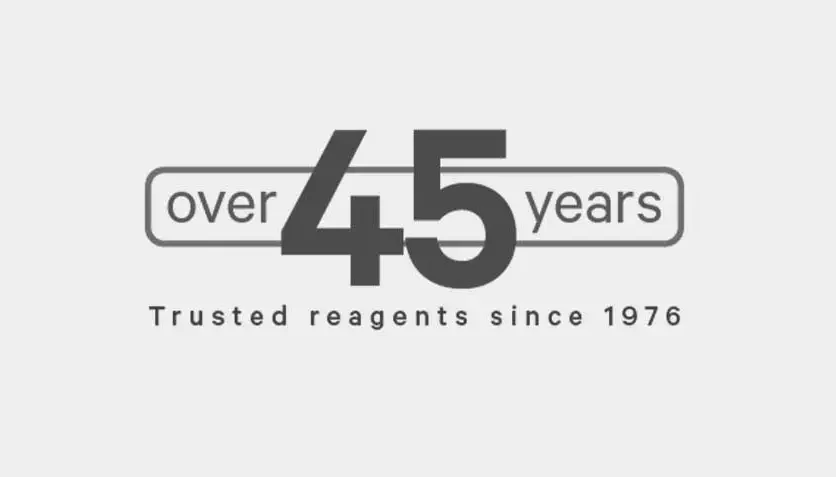dPEG®4 biotin acid, product number QBD-10199, is a biotinylation reagent containing a single molecular weight tetraethylene glycol (PEG) spacer containing biotin on one end and a propionic acid moiety on the other. The terminal propionic acid group couples to amines directly using a carbodiimide such as EDC, and it can be functionalized as an N-hydroxysuccinimidyl (NHS) or 2,3,5,6-tetrafluorophenyl (TFP) ester for reaction with amines.
Amphiphilic dPEG®4 biotin acid can be dissolved both in water or aqueous buffer and in organic solvents. When used as a label, it does not cause aggregation or precipitation of biomolecules even when excess label is used. Using 1-Ethyl-3-(3-dimethylaminopropyl)carbodiimide (EDC) chemistry, QBD-10199 can be coupled directly to free primary amines in aqueous media. These free amines can be on a protein, peptide, or the treated surface of a nanoparticle. The linker length of dPEG®4 biotin acid is slightly longer than hydrophobic LC-biotin and demonstrates superior performance over LC-biotin due to its flexiblity and water solubility.
Product number QBD-10199 is the precursor product of our popular products QBD-10198, NHS-dPEG®4-biotin, and QBD-10008, Biotin-dPEG®4-TFP ester. Many applications use this product to take advantage of the strong avidin-biotin binding interaction. Such applications include single-cell imaging of protein secretion, developing biosensors, isolating specific cell types by separation with magnetic beads, characterizing and understanding the streptavidin-biotin interaction, creating affinity-based probes, and assembling supramolecular nanostructures.
| Unit Size | 100 mg, 1000 mg |
|---|---|
| Molecular Weight | 491.60; single compound |
| Chemical formula | C₂₁H₃₇N₃O₈S |
| CAS | 721431-18-1 |
| Purity | > 98% |
| Spacers | dPEG® Spacer is 16 atoms and 19.2 Å |
| Shipping | Ambient |
| Typical solubility properties (for additional information contact Customer Support) | Methylene chloride, Acetontrile, DMAC, DMSO or water. |
| Storage and handling | -20°C; Always let come to room temperature before opening; be careful to limit exposure to moisture and restore under an inert atmosphere; stock solutions can be prepared with dry solvent and kept for several days (freeze when not in use). dPEG® pegylation compounds are generally hygroscopic and should be treated as such. This will be less noticeable with liquids, but the solids will become tacky and difficult to manipulate, if care is not taken to minimize air exposure. |
Greg T. Hermanson, Bioconjugate Techniques, 3rd Edition, Elsevier, Waltham, MA 02451, 2013, ISBN 978-0-12-382239-0; See Chapter 18, Discrete PEG Reagents, pp. 787-821, for a full overview of the dPEG® products.
Macrocycles That Inhibit the Binding between Heat Shock Protein 90 and TPR-Containing Proteins. Veronica C. Ardi, Leslie D. Alexander, Victoria A. Johnson, and Shelli R. McAlpine. ACS Chem. Biol. 2011, 6 (12), pp 1357–1366. September 27, 2011. DOI: 10.1021/cb200203m.
Sensitive Detection of Small Molecule–Protein Interactions on a Metal – Insulator – Metal Label-Free Biosensing Platform. Amir Syahir, Kotaro Kajikawa and Hisakazu Mihara. Chemistry Asian Journal. 2012, 8 (7), pp 1867-1874. August 2012. DOI: 10.1002/asia.201200138.
Surface Functionalization Using Catalyst-Free Azide-Alkyne Cycloaddition. Alexander Kuzmin, Andrei Poloukhtine, Margreet A. Wolfert, and Vladimir V. Popik. Bioconjugate Chem. 2010, 21 (11) pp 2076–2085. October 21, 2010. DOI: 10.1021/bc100306u.
Measurement of Inflammatory Cytokine Secretion from Human Monocytes after Inflammasome Activation. Yoshitaka Shirasaki, Asahi Nakahara, Nanako Shimura, Kazushi Izawa, Nobutake Suzuki, Mai Yamagishi, Jun Mizuno, Tetsushi Sekiguchi, Ryuta Nishikomori, Shuichi Shoji, Osamu Ohara. Royal Society of Chemistry. 2012, 978-0-9798064-5-2 pp 1012-1014. November 1, 2012. DOI: 12CBMS-0001.
Prion protein 90-231 contains a streptavidin-binding motif. Thurid Boetel, Steffen Bade, Marcus Alexander Schmidt, Andreas Frey. Biochemical and Biophysical Research Communications. 2006, 349 (1) pp 296-302. October 13, 2006. DOI: 10.1016/j.bbrc.2006.08.041.
Real-time single-cell imaging of protein secretion. Yoshitaka Shirasaki, Mai Yamagishi, Nobutake Suzuki, Kazushi Izawa, Asahi Nakahara, Jun Mizuno, Shuichi Shoji, Toshio Heike, Yoshie Harada, Ryuta Nishikomori and Osamu Ohara. Scientific Reports. 2014, 4 (4736) pp 1-16. April 22, 2014. DOI: 10.1038/srep04736.
Synthesis of Three-dimensional Polymer Nanostructures via Chemical Vapor Deposition. Kenneth Chang. Dissertations and Theses (Ph.D. and Master’s). 2017, pp iv-157. 10/5/2017.
A high-resolution real-time quantification of astrocyte cytokine secretion under shear stress for investigating hydrocephalus shunt failure. Fatemeh Khodadadei, Allen P. Liu & Carolyn A. Harris. Communications Biology. 2021. 4, Article number: 387 (2021). 03/23/2021. DOI: 10.1038/s42003-021-01888-7
Quantitative live-cell imaging of secretion activity reveals dynamic immune responses. Mai Yamagishi, Kaede Miyata, Takashi Kamatani, Hiroki Kabata, Rie Baba, Yumiko Tanaka, Nobutake Suzuki, Masako Matsusaka, Yasutaka Motomura, Tsuyoshi Kiniwa, Satoshi Koga, Keisuke Goda, Osamu Ohara, Takashi Funatsu, Koichi Fukunaga, Kazuyo Moro, Sotaro Uemura, Yoshitaka Shirasaki. bioRxiv. 2022. January 10, 2022. https://doi.org/10.1101/2022.02.09.479547
Applicable patents and legal notices are available at legal notices.



Stay in the Loop. Join Our Online Community
Products
Ordering
About Us
Application
Resources

©Vector Laboratories, Inc. 2025 All Rights Reserved.
To provide the best experiences, we use technologies like cookies to store and/or access device information. Consenting to these technologies will allow us to process data such as browsing behavior or unique IDs on this site. Not consenting or withdrawing consent, may adversely affect certain features and functions. Privacy Statement
How do I Request a Quote?
To request a quote for products: